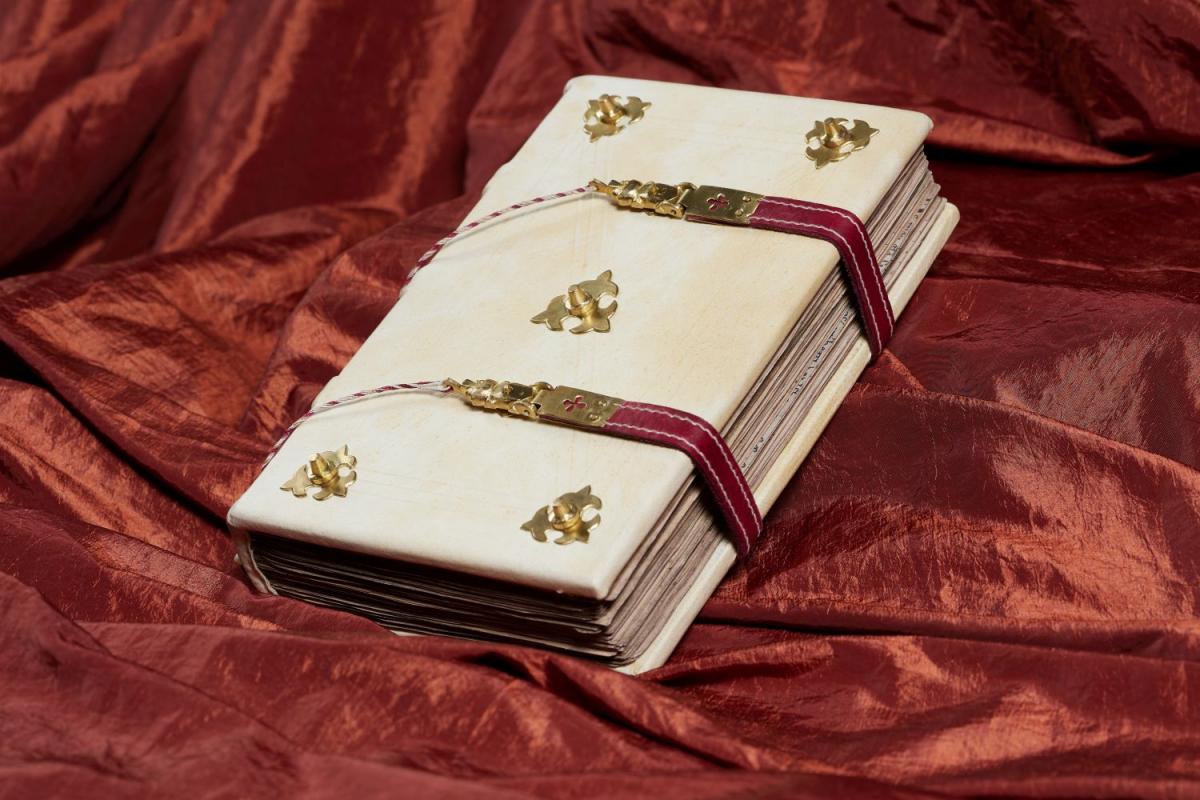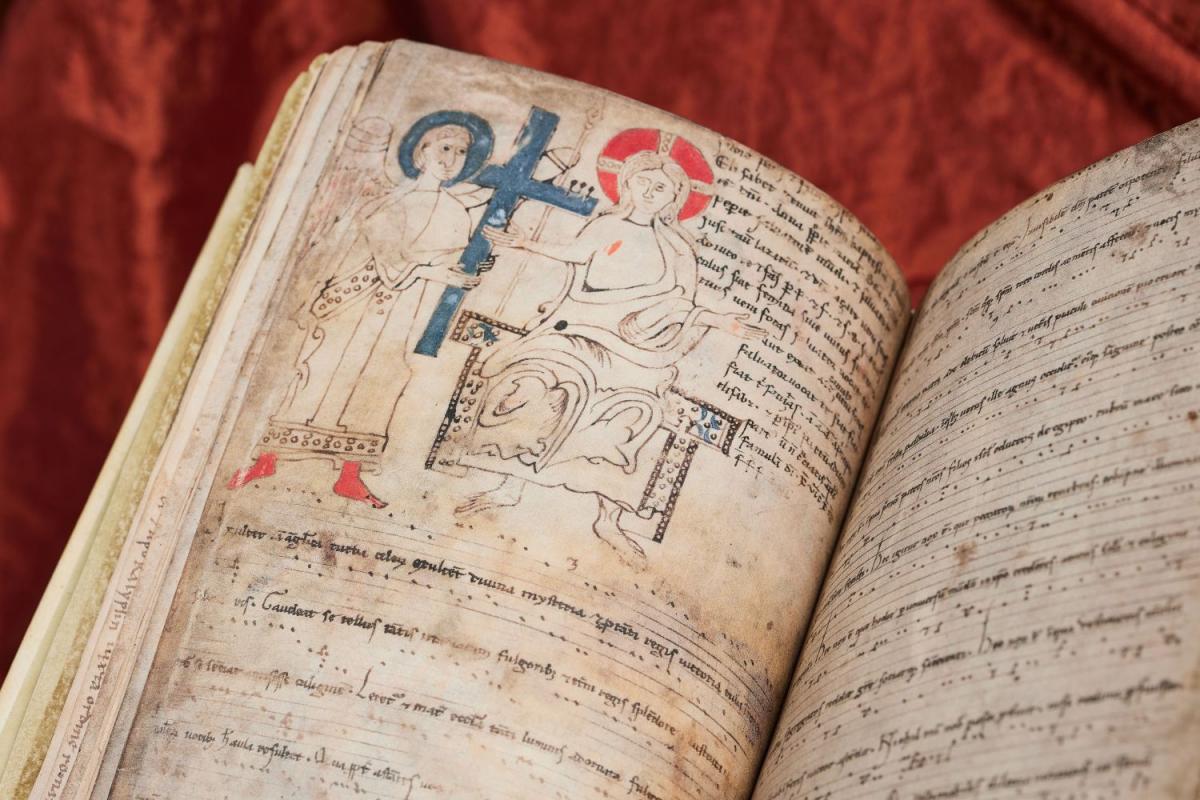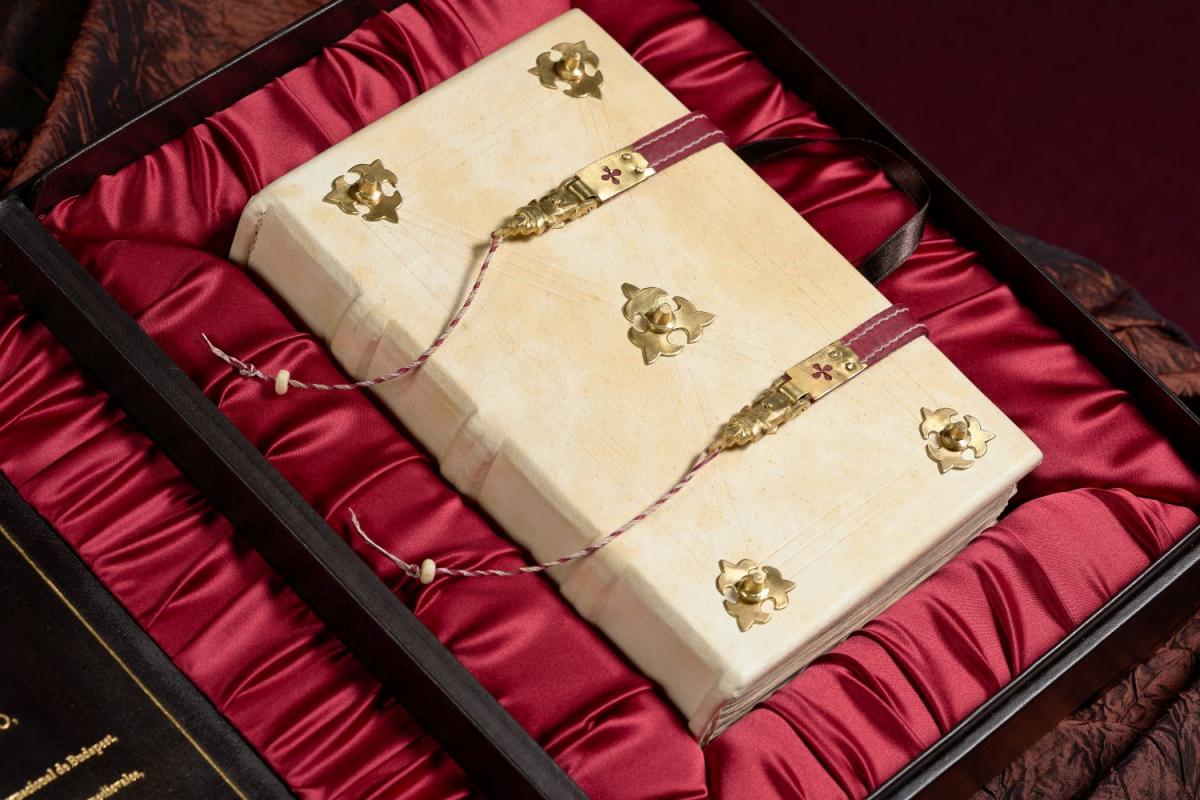
Decorative facsimile copy of the Pray Codex - The gift to the Holy Father on behalf of the Government of Hungary made by the NSZL
The decorative facsimile copy of Pray Codex, which contains the Halotti beszéd és könyörgés [Funeral sermon and prayer], the first coherent Hungarian text dating from the late 12th century, was prepared by the experts of the NSZL as a gift to Pope Francis by the Government of Hungary for, who is visiting Hungary on the occasion of the 52nd International Eucharistic Congress.
 The invaluable composite manuscript was donated to the NSZL by the Chapter of Pozsony (today Bratislava) in 1813 and it was named by the literary historian Ferenc Toldy (1805–1875) after the Jesuit historian György Pray (1723–1801), who first published a report on it in 1770. The Pray Codex is one of the most important documents of 12th-century Hungarian ecclesiastical culture. In the Latin liturgical codex, the sacramentary – a book containing the prayers of the priest who celebrated the mass – is edited for use in Hungary, followed by the texts of certain rituals outside the mass (anointing, laying the foundation stone of the church, funerals). The Halotti beszéd és könyörgés [Funeral sermon and prayer], our earliest coherent text in Hungarian, is found at the end of the funeral service, in its appendix, accompanied by a somewhat more extensive funeral sermon in Latin, on leaf 136 of the codex.
The invaluable composite manuscript was donated to the NSZL by the Chapter of Pozsony (today Bratislava) in 1813 and it was named by the literary historian Ferenc Toldy (1805–1875) after the Jesuit historian György Pray (1723–1801), who first published a report on it in 1770. The Pray Codex is one of the most important documents of 12th-century Hungarian ecclesiastical culture. In the Latin liturgical codex, the sacramentary – a book containing the prayers of the priest who celebrated the mass – is edited for use in Hungary, followed by the texts of certain rituals outside the mass (anointing, laying the foundation stone of the church, funerals). The Halotti beszéd és könyörgés [Funeral sermon and prayer], our earliest coherent text in Hungarian, is found at the end of the funeral service, in its appendix, accompanied by a somewhat more extensive funeral sermon in Latin, on leaf 136 of the codex.
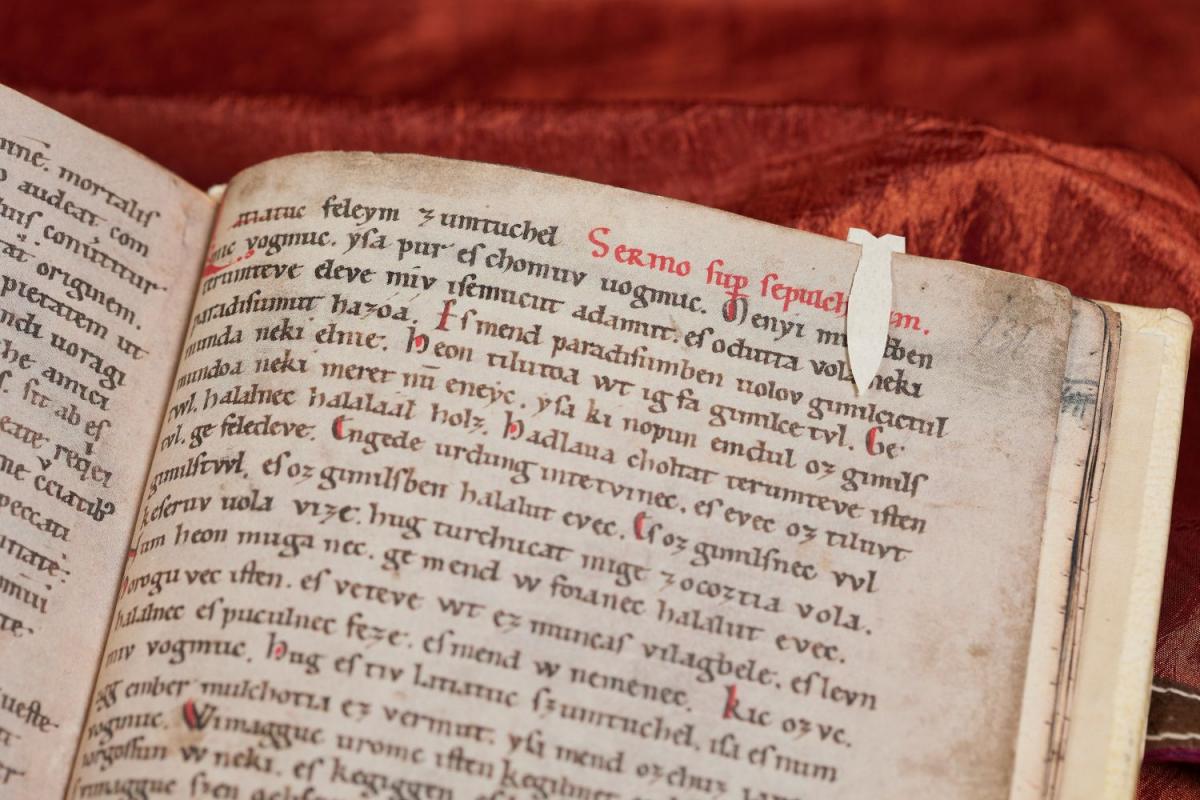 The codex also contains, among several other texts on ritual and canon law (such as the decisions of the Esztergom Synod held by King Coloman the Learned), our only surviving medieval yearbook, the Annales Posonienses, which is the source of information on Hungarian history between 997 and 1203, in many cases known only from here. Among the precious records of the time of the foundation of the state are the dates of the death of Prince Géza, the coronation of King Stephen and the consecration of Gellért as bishop.
The codex also contains, among several other texts on ritual and canon law (such as the decisions of the Esztergom Synod held by King Coloman the Learned), our only surviving medieval yearbook, the Annales Posonienses, which is the source of information on Hungarian history between 997 and 1203, in many cases known only from here. Among the precious records of the time of the foundation of the state are the dates of the death of Prince Géza, the coronation of King Stephen and the consecration of Gellért as bishop.
The codex also includes five coloured pen-and-ink drawings of the crucifixion, burial, resurrection and glorification of Christ, an early example of the Salzburg influence on Hungarian book painting. The manuscript is also important from a music historical point of view as one of the earliest examples of the domestic use of medieval "Hungarian notation" and the reformed notational system of staff notation.
The Pray Codex was photographed in the presence of a specialist conservator and under strict conservation standards in the National Library’s Digitisation Centre. Digital post-production has been carried out to reproduce the appearance of the original codex on the parchment pages, minimising optical distortion. The decorative facsimile copy was printed on special paper.
As the original binding of the Pray Codex has not survived, and the traces on the parchment sheets only allow us to deduce the method of binding, the workshop of the Hungarian Heritage Society, which was awarded the Hungarian Heritage Prize in 2017, prepared the design and execution of the binding of the decorative facsimile copy based on the results of decades of research into the history of binding and the techniques, and taking into account international analogies. The materials used for the binding were chosen by the restorers on the basis of the materials used for monastic bindings of the period.
The decorative facsimile copy was accompanied by an introductory essay Hungarian and Spanish, which was written on parchment by a master bookbinder in lithographic pen, based on the writing techniques of the period. The booklet is bound to the copy of the codex on a double leather binding, and is then bound to the sheets that make up the volume.
The body of the book is protected by eight-millimetre beech plates, covered with tawed uncoloured goatskin with. The copper bosses and clasps, like the binding, are meticulously hand-tooled and based on the designs from the period. The volume is placed in a box with its own design, covered in black leather and lined with burgundy caterpillar silk, and decorated with a hand-painted copy of one of the pen drawings illustrating the codex, the crucifix.
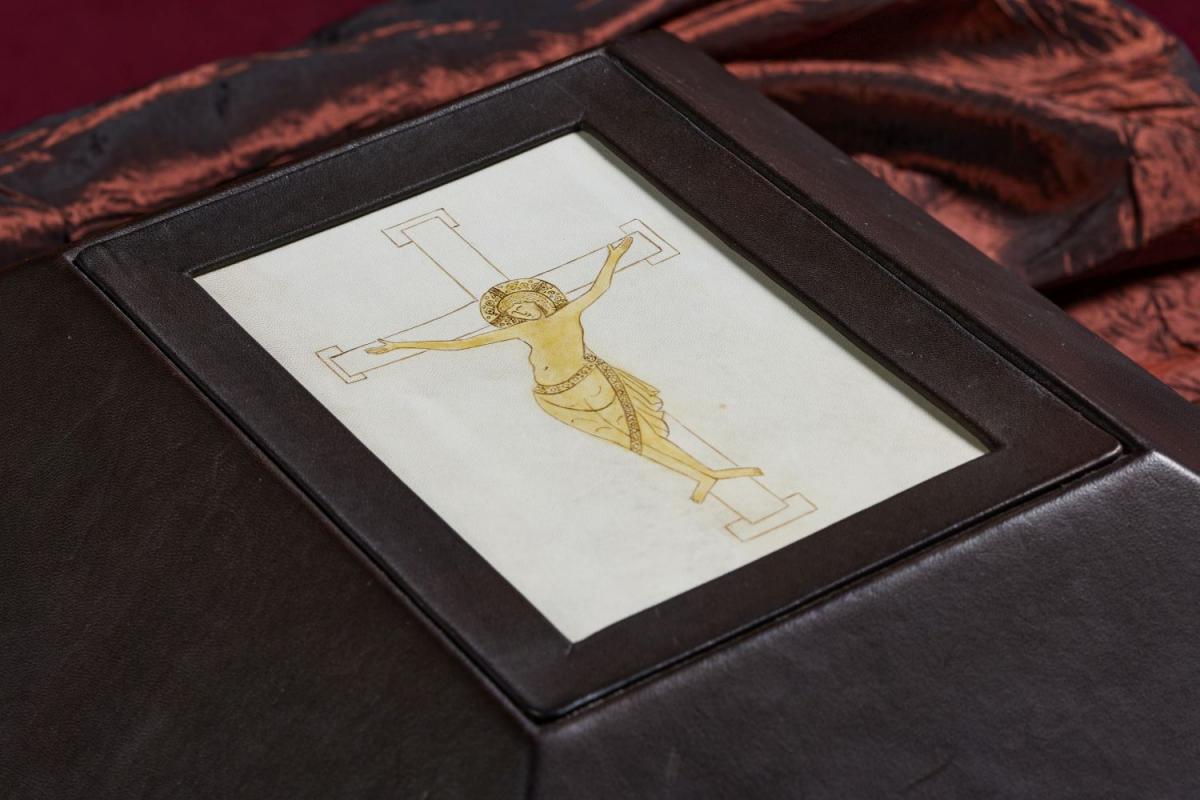 The process of creating the work, which took several months, was accompanied by the staff of the Historical Photo and Video Collection of the NSZL. The film footage, together with interviews with the Director General of the National Library, researchers, digitisation, binding and restoration specialists and invited contributors, will be used to produce a documentary film presenting the Pray Codex and the Halotti beszéd és könyörgés [Funeral sermon and prayer] in detail and from various angles.
The process of creating the work, which took several months, was accompanied by the staff of the Historical Photo and Video Collection of the NSZL. The film footage, together with interviews with the Director General of the National Library, researchers, digitisation, binding and restoration specialists and invited contributors, will be used to produce a documentary film presenting the Pray Codex and the Halotti beszéd és könyörgés [Funeral sermon and prayer] in detail and from various angles.
The experts involved in the production of the decorative facsimile copy:

Digitisation: Magda Bakos, Éva Habram, Dorottya Borbála Kepes, Janka Judit Kiss, András Ormosi, Tünde Szabó T.
Restoration, bookbinding: Edit Balaványné Albert, Ágnes Balogh, Emőke Baranyai, Éva Benke, Anna Zsófia Bornyi, Eszter Fodor, Diána Horváth, Orsolya Koppán, István Molnár, Ágnes Novotny, Zsuzsanna Tóth
Technical support: János Benke
Prepress: Gyula Schöck
Codicology expert: Edit Madas
Manuscript specialist supervision: Miklós Janzsó
Translation: Gábor Sarbak (Latin), Endre Tőzsér (Spanish)
Video documentation: Gergely Ballagó, Viola Dobos, Luca Hanák, Beatrice Lillin, Krisztina Szabó
Artifact photography: Dániel Horváth
Coordination: Tamás Mészáros, Dávid Rózsa, Annamária Sudár


